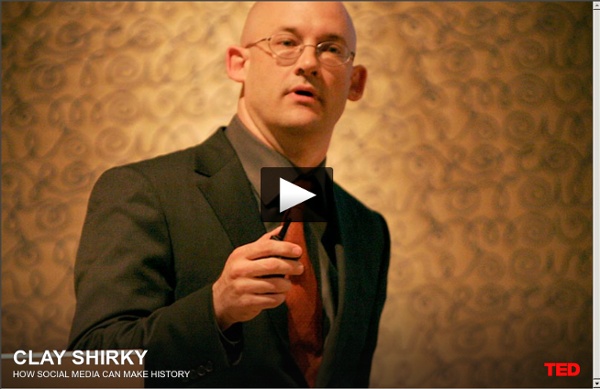



http://www.ted.com/talks/clay_shirky_how_cellphones_twitter_facebook_can_make_history.html
In praise of cooperation without coordination: Clay Shirky at TEDGlobal 2012 Amy Cuddy must be proud: Clay Shirky walks on stage and promptly strikes a power pose. Then he tells us of a 9-year-old Scottish girl who lives about 50 miles from here. Martha Payne started the foodblog NeverSeconds, for which she took her camera into school to document her lunches, using metrics such as “pieces of hair found in food.” First, she acquired dozens, then hundreds, then thousands of readers.
s March 2011 Trend Briefing covering R.A.K. The INTERNET OF CARING THINGS means connected objects that serve consumers' most important needs: physical and mental wellbeing, safety, security, oversight of loved ones, and more. You're probably already familiar with the innovations that have blazed an early CARING trail. The Nest smart thermostat*, NIKE fuelband and Fitbit, for example. SEO Keyword Graph Visualization Use this free Java application to explore the connections between related websites. Try it now! Enter keywords or a URL, and click 'Graph it!' Mapping GitHub – a network of collaborative coders GitHub is a large community where coders can collaborate on software development projects. People check code in and out, make edits, etc. Franck Cuny maps this community (with Gephi), based on information in thousands of user profiles. The above is a map colored and sorted by the main language of each person (PHP, Python, Perl, Javascript, or Ruby).
Sensemaking In information science the term is most often written as "sense-making." In both cases, the concept has been used to bring together insights drawn from philosophy, sociology, and cognitive science (especially social psychology). Sensemaking research is therefore often presented as an interdisciplinary research programme. Sensemaking and information systems[edit] Dervin (1983, 1992, 1996) has investigated individual sensemaking, developing theories underlying the "cognitive gap" that individuals experience when attempting to make sense of observed data. Because much of this applied psychological research is grounded within the context of systems engineering and human factors, there exists a strong desire for concepts and performance to be measurable and for theories to be testable.
Continuous Partial Attention What is continuous partial attention? Continuous partial attention describes how many of us use our attention today. It is different from multi-tasking. The two are differentiated by the impulse that motivates them. When we multi-task, we are motivated by a desire to be more productive and more efficient. We’re often doing things that are automatic, that require very little cognitive processing. Teachers Training International – Helping you motivate, manage and engage your students One of the downsides of teaching is that in the process of educating our students about facts and figures we are also teaching our students how to think. For most teachers their initial response would be to not give this a second thought. However I wonder if this might be one of the greatest long term problems that education is facing right now.
Web 1.0, Web 2.0, Web 3.0 and Counting Well, I’m not sure if you are aware of the differences between what is allegedly called by technology marketers Web 1.0, Web 2.0 and Web 3.0. Simply put, Web 1.0 represents the web in the early nineties and the even through early 21st century. It was all about publishers. You and me and everyone else were just consuming information, news and knowledge, it was a bit more like TV even worse without the ability to call a live show. Unit One: Web 2.0 in Education - KNILT Image borrowed from AppAppeal.com Website Objectives Participants will be able to identify three possible educational benefits of using Web 2.0 in the classroom. Introduction Please begin this unit by taking this short survey Do Some Research